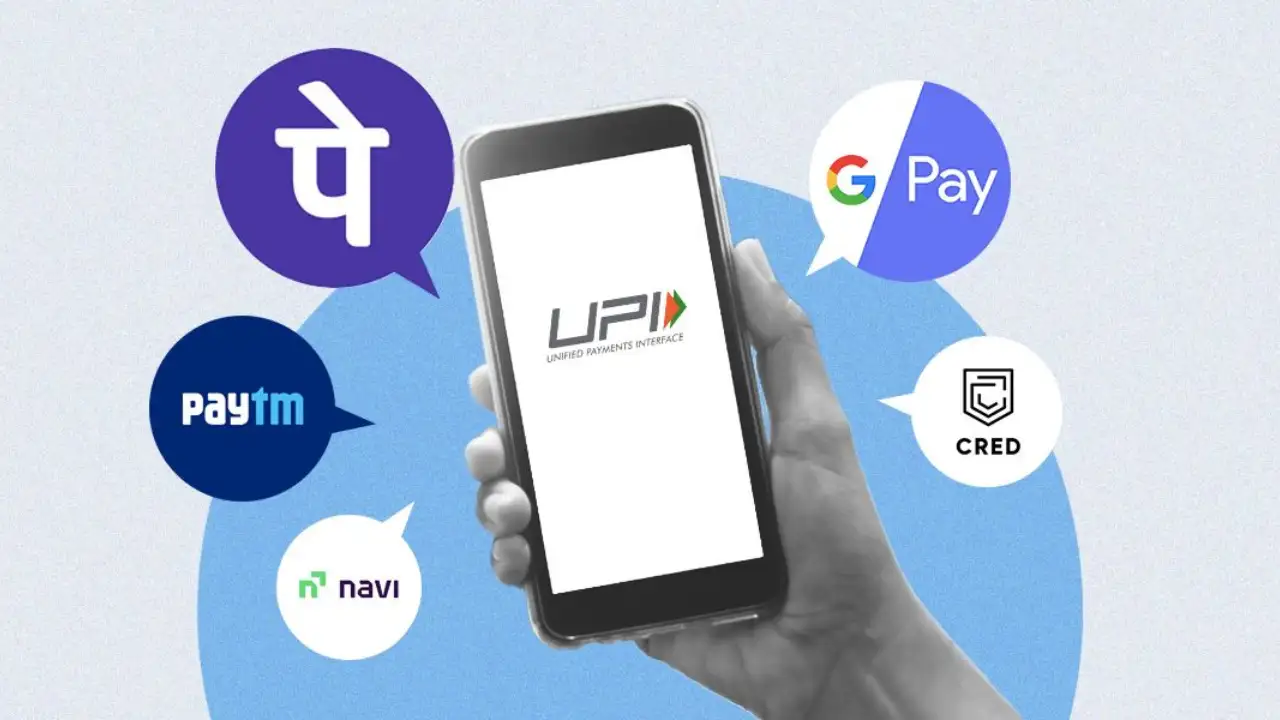India’s Unified Payments Interface (UPI) — the backbone of the country’s digital payment revolution — is all set for a major technological leap. Beginning October 8, 2025, users will be able to make UPI payments using biometric authentication — their face or fingerprint — instead of entering a traditional numeric PIN.
This change, powered by Aadhaar-based biometric data and regulated by the Reserve Bank of India (RBI), marks one of the biggest advancements in India’s digital finance ecosystem. It promises to make payments faster, safer, and more inclusive for millions of users, from urban professionals to rural citizens just stepping into the digital economy.

UPI to Enable Face or Fingerprint Authentication from October 8
The National Payments Corporation of India (NPCI) — which manages the UPI system — is preparing to introduce biometric-based verification for digital transactions. From October 8, users may be able to authorize payments using facial recognition or fingerprint scans, completely replacing the need to enter a UPI PIN.
According to a report by Reuters, NPCI will unveil this groundbreaking feature at the Global Fintech Festival in Mumbai. This event will showcase how biometric verification could redefine the user experience by offering contactless, password-free transactions — a step toward frictionless digital payments.
This is not merely a cosmetic change. For India’s 300+ million UPI users, this evolution could transform how everyday transactions are authenticated, particularly for those who struggle with PIN entry or prefer quick, touch-based approvals.
Aadhaar Data to Power the Biometric System
At the heart of this innovation is Aadhaar, India’s unique identity program that maintains biometric records such as fingerprints, iris scans, and facial data for nearly every resident. The new UPI feature will use this Aadhaar-based biometric data to verify users securely and instantly.
When a user initiates a payment, they will be prompted to authenticate via fingerprint or facial recognition on a compatible device. The system will then match these biometrics with the Aadhaar database in real time to confirm the user’s identity and complete the transaction — no PIN required.
This process will not only make payments quicker and simpler but also reduce dependence on mobile networks or one-time passwords (OTPs), which are often unreliable in areas with poor connectivity. The integration of biometrics into UPI creates a secure, direct link between a user’s physical identity and their digital financial activity.
RBI Guidelines Opened the Door for Biometric Authentication
This milestone has been made possible thanks to the Reserve Bank of India’s updated regulatory framework, which encourages innovation in digital payment security. The RBI recently permitted the use of alternative authentication methods beyond traditional PINs or SMS OTPs.
Under these guidelines, fintech companies and banks have more flexibility to adopt technology-neutral authentication solutions, including biometrics and device-based verification.
By April 1, 2026, RBI’s new rules will mandate two-factor authentication (2FA) for all domestic digital transactions, but the form of authentication — whether biometric, device-based, or tokenized — will be left to the user and service provider. This regulatory shift signals a strong push toward secure yet user-friendly digital payment systems, reducing reliance on outdated OTP systems prone to delays and phishing attacks.
NPCI has also ensured that every UPI transaction under this new system will undergo cryptographic verification by banks, preserving both identity assurance and transaction integrity.

Why Biometric Payments Matter: Safer, Faster, and More Inclusive
Experts in the fintech industry believe that biometric authentication could dramatically reduce fraud and unauthorized access in UPI payments.
Unlike passwords or PINs, which can be forgotten, shared, or stolen, biometric data is unique to every individual and extremely difficult to replicate. This makes biometric-based UPI transactions far more secure than traditional PIN-based ones.
Rohit Mahajan, Founder and Managing Partner of plutos ONE, explained to The Economic Times that this change will “redefine convenience” and expand digital payments access to “millions of new users, especially senior citizens and those in rural India with limited digital literacy.”
He added that biometrics make digital transactions “virtually frictionless” for people who struggle to remember passwords or navigate complex app interfaces. This aligns perfectly with India’s mission to build a cashless, inclusive economy where no one is left behind because of technological barriers.
For example, older users or those with limited literacy will now be able to confirm payments simply by looking at a screen or touching a fingerprint sensor — no typing or PIN memorization required.
Faster Payments, Fewer Errors, Greater Confidence
UPI currently processes over 13 billion transactions each month, and speed is critical to its success. Biometric authentication is expected to significantly reduce transaction time, as users won’t need to wait for OTPs or enter numeric codes.
The new system also allows users to set or reset their UPI PIN using biometric verification instead of an OTP sent via SMS. This enhancement will especially help those with unreliable mobile connectivity or those who find OTP-based verification confusing.
The resulting user experience is not only more secure but also seamlessly integrated and faster — an essential requirement as India moves toward its goal of becoming a digitally empowered economy.
Boosting Trust Across the Financial Ecosystem
For fintech platforms, payment gateways, and banks, this upgrade is a major opportunity to enhance user trust and drive adoption. Faster, PIN-free authentication reduces dropout rates during transactions and boosts confidence among users new to digital banking.
Businesses may also benefit from fewer failed transactions and improved customer satisfaction, which can lead to higher engagement and conversion rates. As digital payments expand to smaller towns and villages, biometric authentication bridges the gap between accessibility and safety, ensuring that convenience doesn’t compromise trust.
Privacy and Data Protection: The Crucial Balancing Act
Despite the enthusiasm surrounding this innovation, experts warn that the rollout must prioritize privacy and data protection above all else.
Rohit Mahajan cautioned that “strong measures must be in place to ensure user consent, protect biometric information, and maintain smooth operations across banks and UPI apps.”
Since Aadhaar data forms the backbone of this system, it is imperative to use robust encryption standards, secure storage, and transparent consent mechanisms to prevent data misuse or unauthorized access.
India has made strides in digital governance through frameworks like the Digital Personal Data Protection Act (DPDP Act), but the inclusion of biometrics in financial transactions elevates the stakes. Users must clearly understand how their data is collected, stored, and used, and have the ability to revoke consent if needed.
Moreover, there must be regular system audits, strict penalties for breaches, and public awareness initiatives to maintain trust in this transition to biometric verification.
A Step Towards a Smarter, More Inclusive Digital India
The biometric upgrade to UPI is more than just a feature enhancement — it’s a symbol of India’s fintech maturity. By merging cutting-edge technology with inclusive financial empowerment, India is once again setting global benchmarks for secure and scalable payment innovation.
However, experts emphasize that this progress must be accompanied by user education and strong governance. Citizens should understand their digital rights, the nature of biometric data, and the safeguards in place to protect them.
Maintaining public trust will be vital because, unlike passwords, biometric data is permanent. Any misuse could have lasting consequences, underscoring the need for evolving laws and technical safeguards to keep pace with innovation.
Final Thoughts
The launch of biometric authentication for UPI transactions on October 8, 2025, represents a defining moment in India’s journey toward secure, seamless, and inclusive digital payments.
By allowing users to authorize payments using their face or fingerprint, India’s financial ecosystem is embracing a future where security meets simplicity.
As the RBI, NPCI, and Aadhaar infrastructure work in unison, this technological leap promises to make digital payments more accessible to every Indian — from tech-savvy millennials to first-time digital users in remote regions.
Still, as India takes this giant stride, the focus must remain on privacy, consent, and trust — the cornerstones of any truly digital democracy.
With inputs from agencies
Image Source: Multiple agencies
© Copyright 2025. All Rights Reserved. Powered by Vygr Media.
























